#charles v retired to a monastery in 1556.
Note
How do we know that COA was offered her daughter made bona fides and kept princess? When was this?
It was an offer made by Henry alongside Campeggio when he was there before the trial, that her acceptance of the offer meant the trial could be foregone ....
We (Wolsey and Campeggio) are agreed in opinion to test the mind of the Queen, and to persuade her to consent to the separation, and to enter the profession of some religion. For this purpose his Lordship promised me the assistance of himself and all the prelates of the kingdom, and the favor of the King, and that the Queen shall have any honorable conditions which she demands, retain her station as Queen*, and not lose anything except "l'uso della persona del Re," which he (Wolsey) says she has lost for many years; allowing her her dowry, rents, ornaments, and assignments for her support, and many other things; especially that the succession of the kingdom for the present shall be established in her daughter, by the ordinance and consent of all the estates, in case there should never be any legitimate male heir.
....(although, actually I don't exactly remember, that might have just been one stage of the offer...another might have been that her absence from the trial would ensure a result in Henry's favor; as we know she refused to attend after her speech and it did not, so whether or not that was true...Campeggio had a decretal comission to declare the marriage valid or invalid at Blackfriars and didn't, so in some sense they both got played, although Catherine only in hindsight...ironically, she would later vehemently complain about the severe injustice of the delay in any resolution, but she was the one that had interceded for that delay**, demanding the case only be tried in Rome). Even her counsel at the time, before becoming as contumacious as he did (Bishop Fisher), advised her to take this 'deal', as it were. Off the cuff, I don't remember every reference made to it, Chapuys some months later does also mention (very conditional) 'offers' made to her, but the dispatch is frustratingly vague:
Meanwhile the Queen is daily assailed by people making her all manner of offers, if she will only consent to the divorce; but she remains as firm as ever [...]
In 1533 Chapuys reports Catherine as having said she was willing to take the 'offer' made to her by the King's council three years ago, that then she had thought it was a feint to induce her to accept demotion, but she would accept it now. He does not specify what this offer was, I remember I went back to the sources of when Henry's council visited and argued with her and it was not clear then, either, but I always wondered if that was what she was alluding to. If so it was too late at that point; Henry had decided that the issue of any union that contravened divine law was irrevocably illegitimate (although technically, he would not manage to garner Parliamentary assent for this notion until three years later, he only managed it by implication in 1534), and he believed that was what it was.
Often apologia of Catherine's stance in the late 1520s has been, why should she have even considered that inducement, how was it even presented as an 'offer', even if the papacy had annulled the marriage, Mary would be bona fides regardless, etc. It was presented as an offer, inducement, compromise of sorts because in England that was not the legal precedent (ie, an offer made on behalf of her daughter that was not guaranteed otherwise):
"[Henry VIII] now argued she would would be barred by illegitimacy. This contention puzzled continental contemporaries because elsewhere in western Europe those children born to couples who in good faith believed themselves validly married were treated as legitimate. Nevertheless, Henry was right. After a period of some uncertainty, by the late fourteenth century England had opted out of the bona fides principle. As Sir John Baker notes, 'succession problems were usually debated in legal terms and in accordance with the common law canons of inheritance.' A successful challenge to his marriage would thus automatically bastardise Mary and leave Henry no direct heir... [although] Mary could have been legitimated by statute."
- JF Hadwin, The Journal of Ecclesiastical History
*One assumes this meant only a ceremonial title of some sort, ie Dowager Queen of England, as her sister-in-law was still referred to as Queen of France.
**Probably not anticipating resolution would not take place for another four years, but...still.
#anon#so...i think the answer has to be that catherine believed she would win#and she was vindicated although this was something of a pyrrhic victory for her own lifetime#and beyond it if we are considering 1536-52#or maybe she was not aware of this precedent which doesn't speak very highly of her advisors#her stans kind of want it both ways in a lot of aspects of the GM which is sort of like...#well either she was ignorant of certain things or knew them and decided to take the gamble#which presents a bit of an either/or with the Genius of the Tudor Court versus Devoted Mother Above All except for them it has to be both#the pragmatic solution would have been to put henry to oath with witnesses that mary would be first in succession after any sons#by subsequent marriage... in exchange for her agreement#to either enter convent (although as the article i quoted argues that wouldn't have really been an entire solution in and of itself) or#to tell charles v not to interfere and let the matter run its course in the courts#that is of course something of a secular perspective but isn't that the win win? if you win then great she's ahead of everyone#if you don't at least there's the chance for the throne#this was basically what did end up happening with the caveat that she was still illegitimate but at that point it had nothing to do w/ coa#more like in spite of her#royal retirement also /= an admission of sin; people seem to have really minimal historic literacy on this subject...#charles v retired to a monastery in 1556.#although traditionally it was for royal widows#(catherine of valois; eleanor of provence; elizabeth woodville...)#there might have been the crux of her moral opposition.#henry insisted she was arthur's widow; catherine insisted she was not
9 notes
·
View notes
Text
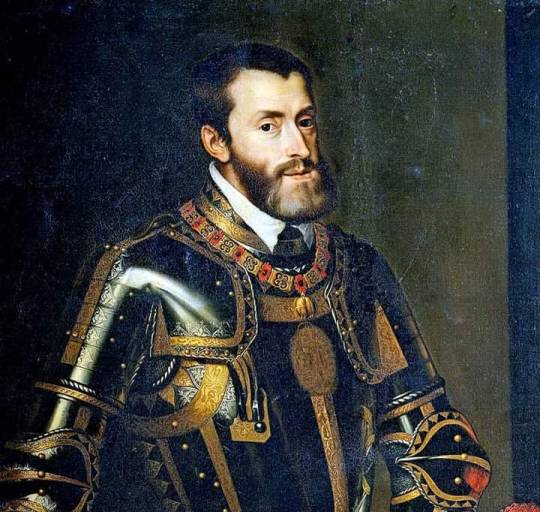
21 SEPTEMBER 1558: Charles V of the Holy Roman Empire and I of Spain dies in Yuste, Spain. He was Mary I's fisrt cousin and at one point one of her strongest suitors. He abandoned the proposed English match to wed his beautiful cousin, the Infanta Isabel of the House of Avis of Portugal. Their marriage produced one son and two daughters. Contrary to what is believed, Charles showed no support to Mary at the time of Edward's death and Jane Grey's accession. The two imperial two ambassadors were told to do everything in their power to appease his cousin and to convince Dudley to abandon his alliance with France. After Mary's triumphant entrance into London that same year, her cousin Charles promised to support her in future enterprises. She wed his only son and heir, Philip, in a lavish ceremony in 1554 and then he left Mary to see his father who abdicated in his favor in August 1556. That same year he retired to the monastery of Yuste.
He was later reburied in the Monastery of the Escorial.
9 notes
·
View notes
Photo
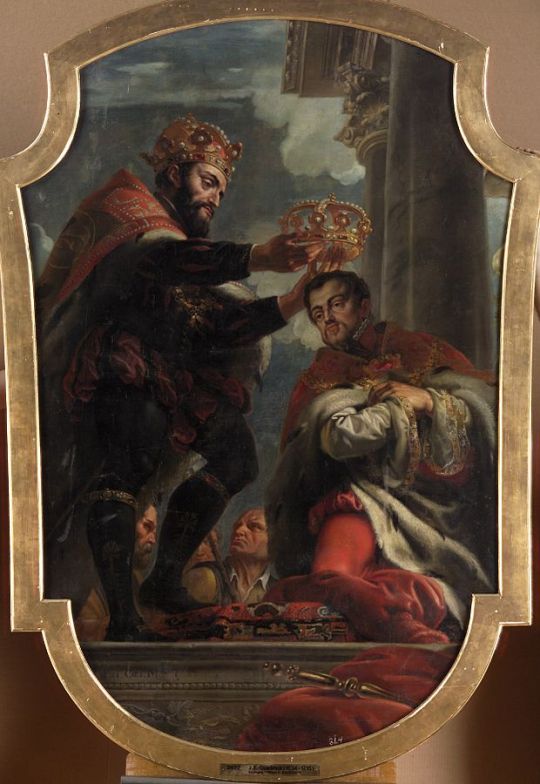
Jan Erasmus Quellinus - Charles V crowns Philip II - 1681
oil on canvas, Height: 193 cm (75.9 in); Width: 124 cm (48.8 in)
Kunsthistorisches Museum, Vienna, Austria
Charles V (24 February 1500 – 21 September 1558) was Holy Roman Emperor and Archduke of Austria from 1519, King of Spain (Castile and Aragon) from 1516, and Lord of the Netherlands as titular Duke of Burgundy from 1506. As head of the rising House of Habsburg during the first half of the 16th century, his dominions in Europe included the Holy Roman Empire, extending from Germany to northern Italy with direct rule over the Austrian hereditary lands and the Burgundian Low Countries, and a unified Spain with its southern Italian kingdoms of Naples, Sicily, and Sardinia. Furthermore, his reign encompassed both the long-lasting Spanish and the short-lived German colonizations of the Americas. The personal union of the European and American territories of Charles V was the first collection of realms labelled "the empire on which the sun never sets".
Ultimately, Charles V conceded the Peace of Augsburg and abandoned his multi-national project with a series of abdications in 1556 that divided his hereditary and imperial domains between the Spanish Habsburgs headed by his son Philip II of Spain and the Austrian Habsburgs headed by his brother Ferdinand, who was Archduke of Austria in Charles's name since 1521 and the designated successor as emperor since 1531. The Duchy of Milan and the Habsburg Netherlands were left in personal union to the King of Spain, but remained part of the Holy Roman Empire. The two Habsburg dynasties remained allied until the extinction of the Spanish line in 1700. In 1557, Charles retired to the Monastery of Yuste in Extremadura and there died a year later.
Philip II (Spanish: Felipe II; 21 May 1527 – 13 September 1598) was King of Spain (1556–98), King of Portugal (1580–98, as Philip I, Portuguese: Filipe I), King of Naples and Sicily (both from 1554), and jure uxoris King of England and Ireland (during his marriage to Queen Mary I from 1554 to 1558). He was also Duke of Milan, and from 1555, lord of the Seventeen Provinces of the Netherlands.
Jan Erasmus Quellinus (1634 in Antwerp – 11 March 1715 in Mechelen) was a Flemish painter and draughtsman and a member of the famous Quellinus family of artists. He was one of the last prominent representatives of the great Flemish school of history and portrait painting in the 17th century. His work displays the classicizing influences of his father Erasmus Quellinus the Younger and Paolo Veronese. Mainly active in his native Antwerp, he worked for some time in Vienna for the Habsburg court as a court painter to Emperor Leopold I.
25 notes
·
View notes
Text
October 25 in History Events, Birthdays, & News
October 25 in History Events, Birthdays, & News
To know what happened today in history, famous events occurred, famous birthdays, death days, legend quotes, and historical news on October 25.
October 25
Events on October 25
1556 Charles V, King of Spain and Holy Roman Emperor, retires to a Spanish monastery, dividing his possessions between his son and his brother.
1647 Death of the Italian inventor of the barometer, Evangelista…

View On WordPress
0 notes
Photo

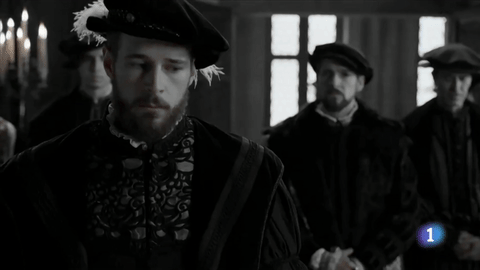
Chansons for a beloved wife
On the first of May 1539, Isabella of Portugal died. Isabella, the wife of the Emperor Charles V, the most powerful monarch in Europe, succumbed to fever after giving birth; the child also failed to survive. In an age of dynastic alliances that paid scant heed to the feelings of those involved, the Imperial marriage was unusual in being marked by real affection from the outset, so Charles felt the loss of Isabella particularly keenly. He put aside affairs of state and for a period withdrew to a monastery. Whilst in retreat he wrote to his brother, the Archduke Ferdinand, saying that ‘he had nothing left to do but to submit himself in all patience to God’s will, and pray him to take Isabella to him in Paradise’.
One mark of Charles’s continuing affection for his wife was the commission from the artist Titian of a number of posthumous portraits, but Charles’s hope that it would be the divine will for his salvation and heavenly reunion with Isabella is most vividly displayed in Titian’s Gloria, showing the Imperial couple worshipping the Trinity, the patron of the Empire. Charles prized this and his portraits of Isabella so highly that they were among the few paintings that he took into his final retirement at the monastery of Yuste in 1556.
The devotion Charles exhibited towards the memory of his beloved wife found expression not just through visual depictions but in music, too, in a number of works by the Netherlandish composer Thomas Crecquillon. He is known to have been chapel master of Emperor Charles V from 1540, probably until 1545, when the burden of composition seems to have taken over and Cornelius Canis assumed the more routine tasks of running the choir. Recent scholarship has identified three chansons, Oeil esgaré, mon cueur de toy faict plaincte and two settings of Mort m’a privé par sa cruelle, by Thomas Crecquillon as expressions of the emperor’s mourning for his deceased wife Isabella of Portugal. It has been proposed that the text of Mort m’a privé par sa cruelle was written by someone in the imperial court circle, possibly by Charles V himself. Another musical tribute to Isabella is Carole cur defles Isabellam that was composed in 1545 by the Franco-Flemish composer Nicolas Payen.
Sources:
Music and ceremony at the court of Charles V : the Capilla Flamenca and the art of political promotion by Mary Tiffany Ferer
http://www.brabantensemble.com/discography/thomas-crecquillon-missa-mort-ma-prive-motets-and-chansons/
67 notes
·
View notes
Photo

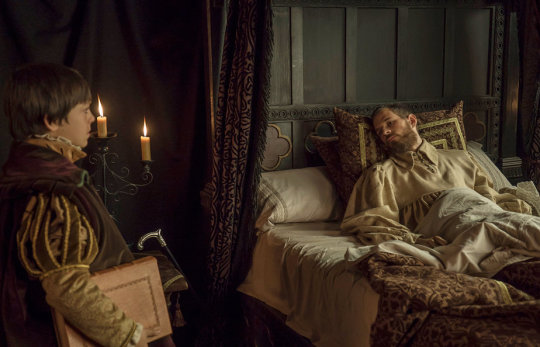
The Death of an Imperial Giant
On the 21st of September 1558, Charles V of the Holy Roman Empire and I of Spain died in the monastery of Yuste in Extremadura, Spain. He was Queen Mary (I) Tudor of England and Ireland’s fisrt cousin and at one point one of her strongest suitors. He abandoned the proposed English match to wed his beautiful cousin, the Infanta Isabel of the House of Avis of Portugal. Their marriage produced one son and two daughters.
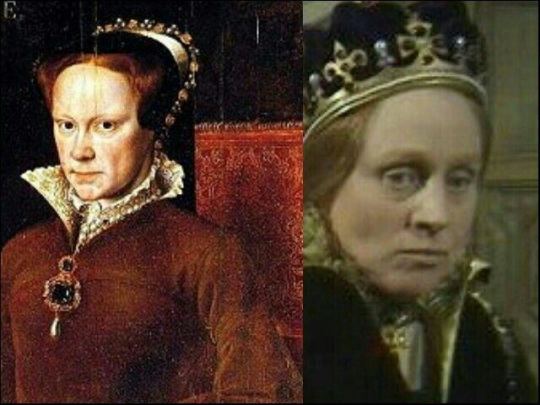
Contrary to what is believed, Charles showed no support to Mary at the time of Edward's death and Jane Grey's accession. The two imperial two ambassadors were told to do everything in their power to appease his cousin and to convince Dudley to abandon his alliance with France. After Mary's triumphant entrance into London that same year, her cousin Charles promised to support her in future enterprises. She wed his only son and heir, Philip, in a lavish ceremony in 1554 and then he left Mary to see his father who abdicated in his favor in August 1556. That same year he retired to the monastery of Yuste.
Charles Habsburg had come as a teenager to Spain with little to no knowledge of his new dominions. Many distrusted him and it didn’t help that he started appointing foreigners to important positions, as well as leaving them in charge when he was away. It was one of the reasons why his marriage to the beautiful Isabella of Portugal helped him because being a Portuguese Princess and of an old and well-established House (the House of Avis) helped him gain popularity. The two were the power couple of Western Europe of their day. Charles trusted Isabella in everything, including their children’s education and when he was away, he left her in charge.
After Isabel’s death in 1539, Charles V became depressed but quickly willed himself out of his sombre state to get back to business. Yet he left the matter of his wife’s burial entirely in his son’s hands who was only twelve years old at the time.
As his health began to fail him, he began thinking of early retirement and in October of 1555 he gave a long speech in Brussels before his son and other important people, where he declared that he would abdicate in his favor. The Empire would be left to his brother (Ferdinand) and his family after he died, and his Spanish dominions would pass on to his son on his abdication. The following year in January he did just that and Philip of Asturias became Philip (II) of Spain.Charles’ hobby in his old age was building clocks. (Not a bad hobby if you think about it. Although I wouldn’t have the patience for that, but good for him!)
It was said that after receiving the news of his father’s death and then his wife’s death a month later, destroyed Philip and he grieved for both of them deeply. Henry Kamen cites one important source which says that in December, after receiving the news of her death; Philip became distraught and sent the Count of Feria to Elizabeth to see if she would protect the Catholic religion.
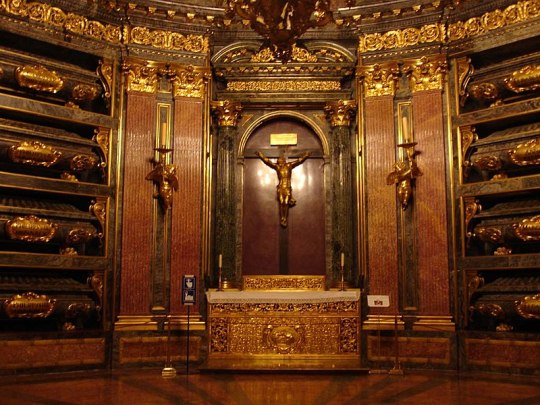
More than two decades after his death, his tomb was moved to the Monastery of El Escorial in the Pantheon of Kings where he still rests.
To get a better sense of Charles V, I highly recommend Emperor: A New Life of Charles V by Gefforey Parker and Four Princes: Henry VIII, Francis I, Charles V, Suleiman the Magnificent and the Obsessions that Forged Modern Europe by John Julius Norwich Henry Kamen’s biography on his son, Philip of Spain. All three biographies offer different perspective on Charles V which broaden’s one view about his Imperial Majesty.
16 notes
·
View notes